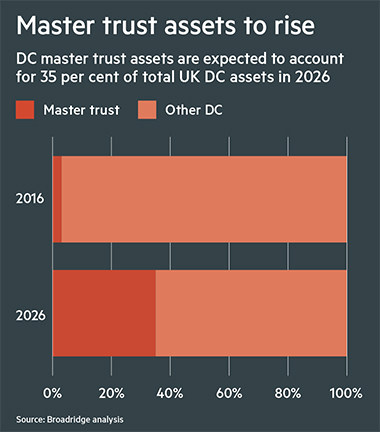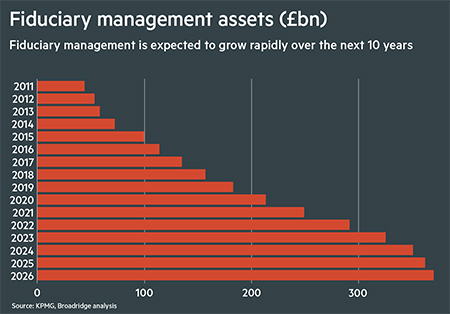Unlike pension systems in the rest of Europe, where large-scale pension funds are common, the UK is characterised by a large number of small, single-employer pension schemes. Whether or not superfunds take off, consolidation will reshape the nation's pension schemes, says Broadridge's Jonathan Libre.
The Dutch model sets a precedent in a market that has already gone through a huge wave of consolidation. The number of single employer pension funds has fallen from 957 in 1997 to 183 in 2017, and the country’s pension system is revered as one of the best in the world.
On the defined benefit side, there is a regulatory and legislative push towards facilitating consolidation. The 89 Local Government Pension Scheme member funds across England and Wales have already merged into pools, and the focus is now shifting to the private sector.
Fiduciary management arguably represents a compelling middle ground and has grown rapidly as a result. With the recent Competition and Markets Authority review out of the way, we expect the market to continue to grow rapidly over the next 10 years
The Department for Work and Pensions’ 2018 DB white paper listed “encouraging consolidation” as one of three key areas for policy.
FM growth is consolidation by back door
The ‘tightest’ forms of consolidation available to DB schemes are insurance buyout (where a scheme’s assets and liabilities are transferred to an insurance company), or pooling into superfunds, which have emerged this year.
While buyout is a popular option among many sponsor finance directors, it has remained out of reach for many underfunded schemes, and the market is constrained by the limited capacity of insurers active in the market to take on DB liabilities.
Superfunds may well appear to be an attractive, less-expensive alternative to buyout, but trustees must be able to justify transferring members over to superfunds that will potentially face less-rigorous solvency requirements than those faced by insurers.

At the ‘looser’ end of the consolidation spectrum, offerings such as DB investment platforms and sole trusteeship allow schemes to benefit from shared services and therefore realise some economies of scale through collective bargaining.
Fiduciary management arguably represents a compelling middle ground and has grown rapidly as a result. With the recent Competition and Markets Authority review out of the way, we expect the market to continue to grow rapidly over the next 10 years.
DB master trusts are also available as a means of pooling DB assets, yet so long as the liabilities remain on the corporate’s balance sheet, it is possible that they will not want to fully outsource the scheme’s governance.
DC consolidation already ramping up
These liabilities are not a problem within defined contribution, and the DC market is even more disparate than DB. Total DC assets are far smaller than DB, and these assets are spread very thinly across a much larger number of schemes.

Within this environment, DC master trusts have emerged as popular consolidation vehicles, allowing sponsors to fully outsource pension governance. With some master trusts having picked up millions of auto-enrolled members, and master trusts now picking up transferring schemes, we project DC master trust assets to account for 35 per cent of total UK DC assets in 2026, up from just 3 per cent in 2016.
With greater scale comes greater bargaining power and a greater capacity to invest in more sophisticated investment strategies and alternative asset classes. The biggest gains here are most likely to be realised within the DC market, where investment strategies to date are reliant on simple, very low-cost passive approaches.
Jonathan Libre is principal in the EMEA Insights team at Broadridge Financial Solutions














